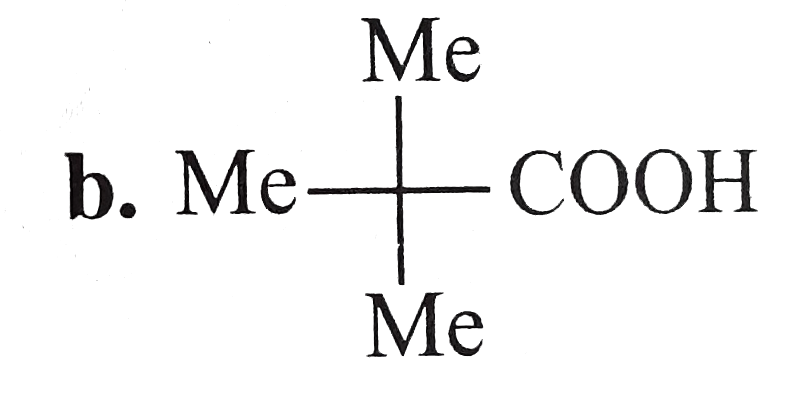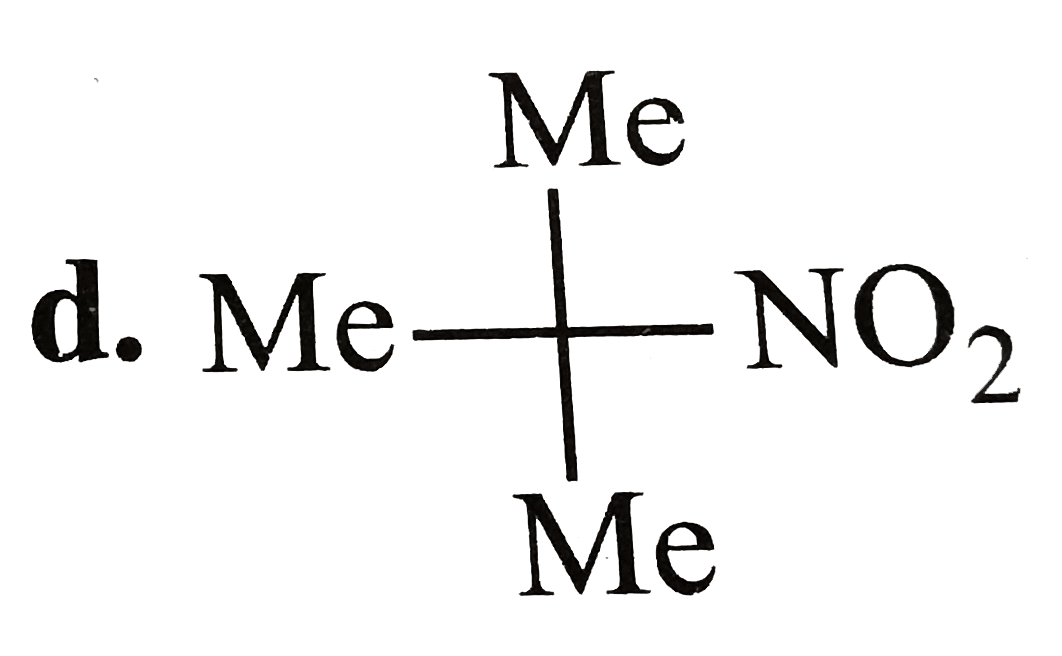The alkyne which gives pyruvic acid (CH3COCOOH) on oxidation with alk. KMnO4 is -
CH≡CH
CH3C≡CH
CH3−C≡C−CH3
CH3−CH2−C≡CH
The correct Answer is:B
To determine the alkyne that gives pyruvic acid (CH₃COCOOH) upon oxidation with alkaline KMnO₄, we can follow these steps:
Step 1: Understand the Structure of Pyruvic Acid
Pyruvic acid has the formula CH₃COCOOH. It contains three carbon atoms and a carboxylic acid functional group. The structure can be represented as:
O∣∣CH₃−C−COOH
This indicates that we need to find an alkyne that can yield this structure upon oxidation.
Step 2: Identify the Required Carbon Skeleton
Since pyruvic acid has three carbon atoms, we need an alkyne that can provide this number of carbons after oxidation. The alkyne must have a structure that allows for the formation of a carbonyl group (C=O) and a hydroxyl group (OH) after oxidation.
Step 3: Consider Possible Alkynes
Let’s consider the possible alkynes:
1. 1-butyne (CH₃C≡CCH₃)
2. 2-butyne (CH₃C≡CCH₃)
3. 1-pentyne (CH₃C≡CCH₂CH₃)
4. 2-pentyne (CH₃C≡CCH₂CH₃)
Step 4: Oxidation with KMnO₄
When alkynes are oxidized with alkaline KMnO₄, they undergo syn-dihydroxylation, resulting in the formation of diols. For our target, we need to check which alkyne can lead to the formation of pyruvic acid.
Testing 2-butyne:
- The structure of 2-butyne is CH₃C≡CCH₃.
- Upon oxidation with KMnO₄, it will yield:
- CH₃C(OH)-C(OH)CH₃
- This will further dehydrate to yield CH₃C(=O)C(OH) which is pyruvic acid.
Step 5: Conclusion
The alkyne that gives pyruvic acid upon oxidation with alkaline KMnO₄ is 2-butyne (CH₃C≡CCH₃).
Pyruvic acid has the formula CH₃COCOOH. It contains three carbon atoms and a carboxylic acid functional group. The structure can be represented as:
O∣∣CH₃−C−COOH
This indicates that we need to find an alkyne that can yield this structure upon oxidation.
Since pyruvic acid has three carbon atoms, we need an alkyne that can provide this number of carbons after oxidation. The alkyne must have a structure that allows for the formation of a carbonyl group (C=O) and a hydroxyl group (OH) after oxidation.
Let’s consider the possible alkynes:
1. 1-butyne (CH₃C≡CCH₃)
2. 2-butyne (CH₃C≡CCH₃)
3. 1-pentyne (CH₃C≡CCH₂CH₃)
4. 2-pentyne (CH₃C≡CCH₂CH₃)
When alkynes are oxidized with alkaline KMnO₄, they undergo syn-dihydroxylation, resulting in the formation of diols. For our target, we need to check which alkyne can lead to the formation of pyruvic acid.
- The structure of 2-butyne is CH₃C≡CCH₃.
- Upon oxidation with KMnO₄, it will yield:
- CH₃C(OH)-C(OH)CH₃
- This will further dehydrate to yield CH₃C(=O)C(OH) which is pyruvic acid.
The alkyne that gives pyruvic acid upon oxidation with alkaline KMnO₄ is 2-butyne (CH₃C≡CCH₃).
Topper's Solved these Questions
- BOOK - MOTIONCHAPTER - HYDROCARBON EXERCISE - Exercise - 2 (Level-I)29videos
HYDROCARBON
- BOOK - MOTIONCHAPTER - HYDROCARBON EXERCISE - Exercise - 314videos
HYDROCARBON
- BOOK - MOTIONCHAPTER - HYDROCARBON EXERCISE - QUESTIONS6videos
HYDROCARBON
- BOOK - MOTIONCHAPTER - GRIGNARD REAGENTEXERCISE - EXERCISE-216videos
GRIGNARD REAGENT
- BOOK - MOTIONCHAPTER - IONIC EQUILIBRUIMEXERCISE - Exercise -4 (Level -II)14videos
IONIC EQUILIBRUIM
Similar Questions
Knowledge Check
- Question 1 - Select One
Toluene, on oxidation with KMnO4 gives
AbenzaldehydeBphenolCnitrotolueneDbenzoic acid - Question 2 - Select One
Xylenes on oxidation with acidic KMnO4 gives
ATerphthalic acidBPhthalic acidCIsophthalic acidDAll of these - Question 3 - Select One
The compound Me3C−NH2 on oxidation with acidic KMnO4 gives:
Aa. Bb.
Bb. Cc.
Cc. Dd.
Dd.
Which of the following does not give benoic acid salt on oxidation with hot alkaline KMnO4.
View SolutionWhich of the following does not give benzoic acid salt on oxidation with hot alkaline KMnO4.
View Solutionn−Butylbenzene on oxidation with hot alkanine KMnO4 gives:
View SolutionThe compound which does not lead to benzoic acid by oxidation with KMnO4 is
View SolutionWhich of the following will not produce benzoic acid by oxidation with alkaline KMnO4 ?
View Solution

